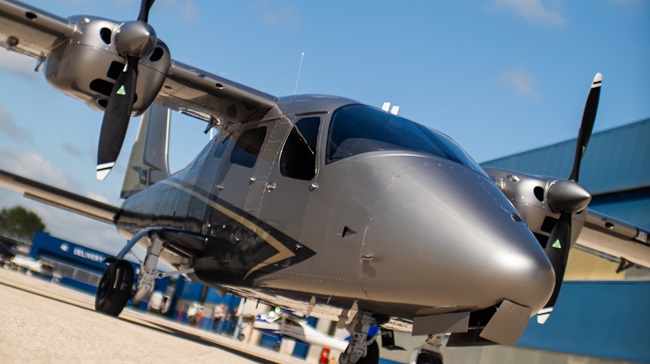Icon lays off workers, details new purchase agreement
Icon said it will deliver 20 airplanes this year, down from 175. It eliminated 60 full-time jobs and 90 part-time and contract positions. Icon currently has about 160 workers.
The two-place sport airplane was announced in 2008 and quickly became a sensation. It won FAA approval for a weight increase in 2013 for a stall-resistant wing designed to enhance safety. The first production model received glowing flight evaluations from the aviation media last year, and Icon took deposits for about 1,850 aircraft.
Icon said the first airplanes it produces at its Vacaville, California, factory will go to company-affiliated flight schools in California, Florida, and Texas.
“If there is a silver lining to this news, it’s that we are taking this opportunity to accelerate the introduction of Icon Flight Centers,” Hawkins said. “This will give Icon a regional presence that allows deposit holders to get earlier access to an A5 for demonstration flights and training without having to come out to California.”
The company announced a highly restrictive sales agreement for buyers early this year that quickly became a rare public relations blunder for the company. It plans to release a revised version in the next few weeks but touched on some highlights today.
Icon has removed some of the most controversial elements—including an airframe life limit—from its purchase agreement for the amphibious A5 light sport airplane.
But the California firm announced May 25 that it will insist that buyers agree to other measures that it said will promote safety, encourage responsible flying, and protect the company from frivolous lawsuits.
“We’ve listened carefully to your feedback and have significantly revised the Icon purchase agreement in response,” Hawkins said. “The original version was long, complex, reader-unfriendly, and included many unusual terms ... We should have done a much better job sharing our philosophy and eliciting your feedback in advance. We’ll own that failure.”
Hawkins said he hopes the revised contract terms put the matter to rest.
The new purchase agreement eliminates the previous company-imposed 30-year airframe limit. It also sets a cost cap for recurring 10-year airframe overhauls at $15,000, and does away with a requirement for a functioning cockpit video/audio recorder. It ends other onerous terms such as a $2,000 ownership transfer fee, a requirement for 10 hours of solo flight before taking passengers, and company buyback rights for airplanes sold within 12 months of original purchase.
The cockpit video/audio recorder was particularly contentious among pilots who saw it as an invasion of privacy.
“We don’t want to be Big Brother,” Hawkins said. “It’s not worth worrying about.”
Icon customers who have already signed purchase agreements will be granted the new terms automatically, company officials said.
Icon said it won’t compromise, however, on “key concepts” it believes will promote safety and prevent baseless lawsuits.
For example, Icon’s new contract requires all buyers to satisfactorily complete company-authorized flight training; maintain their aircraft at authorized service centers; carry flight data recorders that show how their airplanes are being flown in case of an accident; and agree not to sue Icon unless the NTSB determines a crash is the company’s fault.
“We’ll own our mistakes, and we ask others to own theirs,” Hawkins said. “Reducing product liability costs is important because it reduces the cost of aircraft and allows manufacturers to spend that money on product development.”
Icon also leaves in place a $5,000 charge for customers who sell their airplanes to buyers that don’t sign the company operating contract. (Icon does offer one sweetener: A $5,000 credit toward a new Icon aircraft for sellers that do get buyers to sign the Icon contracts.)


